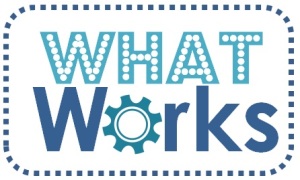Comic strips are picture stories that convey loads of information and visual detail. They are a wonderful resource for language arts and creative writing activities and make an excellent option for narrations and storytelling.
Here are some comic tips:
- Plan out six to 8 facts or ideas for your story on rough paper first. Just think … eight blocks = eight facts?
- Look at some real comics with your children before your start to show how a reader reads the dialogue from left to right, from top to bottom if there is more than one “call out” or speech bubble in a block.
- When writing the dialogue, first print the dialogue small & neatly, then draw the speech bubble around the words. This prevents you running out of space in your bubble.
- Use different shaped “call out” bubbles – bubbled for thoughts, pointed to a mouth as speech, zig-zag to show radio comments or computer voice.
- Add a top or bottom information phrase block if needed, like: Later on … or Back inside …
- Use the space left after the speech to draw simple ideas. Colour adds to the effects.
- Use onomatopoeic (sound effect) words and draw them with style to show something popping, crashing, exploding, squeaking etc.
- Be creative! Have FUN!

Here is your free comic strip template download ~

Most the comics include dialogue written in speech bubbles. In my post Use Comics To Teach Direct Speech I described our effective lesson on how to write direct speech from a comic strip. Here’s a brief summary:
Simple direct speech rules.
- Write down the spoken words or dialogue that appear in speech bubbles exactly as they appear, but inside inverted commas.
- Use inverted commas or quotation marks “…” immediately before and after the spoken words.
- Insert punctuation marks that suit the dialogue after the dialogue inside the inverted commas.
- Use capital letters to start any dialogue, or any new dialogue that follows a full stop.
- Question marks & exclamation marks act as a full stop.
- Use an appropriate attribution for each speaker and try be creative and vary using the word “said”.
- Separate dialogue from the attribution with a comma.
- ALWAYS skip a line and start a new line for a new speaker. When typing the direct speech on the computer, press ‘enter’ + ‘enter’ again to leave a line open and begin on a new line.
Comics contain a lot of visual information. The scene and actions should be described in words. Adding this to the direct speech, and conveying a flow of action, thought and interest to the written dialogue is a more advanced skill, making a wonderful, interesting story.
In my post Use Comics to Teach Reported Speech, we chose my daughter’s most dramatic comic strip story and she pretended that she was a news reporter, changing her speech dialogue in speech bubbles into reported speech. Once again, we looked for examples of reported speech in our read aloud literature books. Charlotte Mason’s principle to teach grammar and language arts through living books and good literature is amazingly effective!
Here are Usborne Book of English Grammar basic rules of writing reported speech summarized ~
- Report what someone said using your own words.
- No need for inverted commas.
- Change the verb to the past tense.
This report can then be written as a newspaper report or given as a speech as a TV news reporter.
The comic strip template is included in my more than 100 Narration Ideas Booklet which you can order on my Order Packages page.
Blessings, Nadene





 of
of 

















You must be logged in to post a comment.